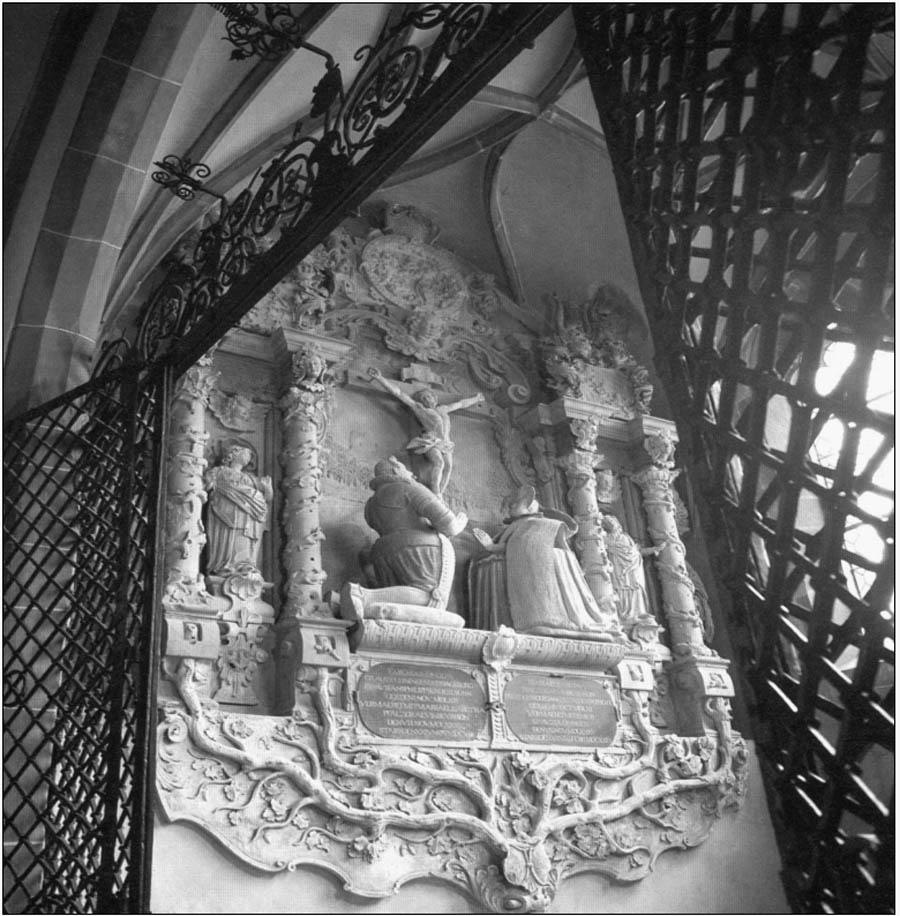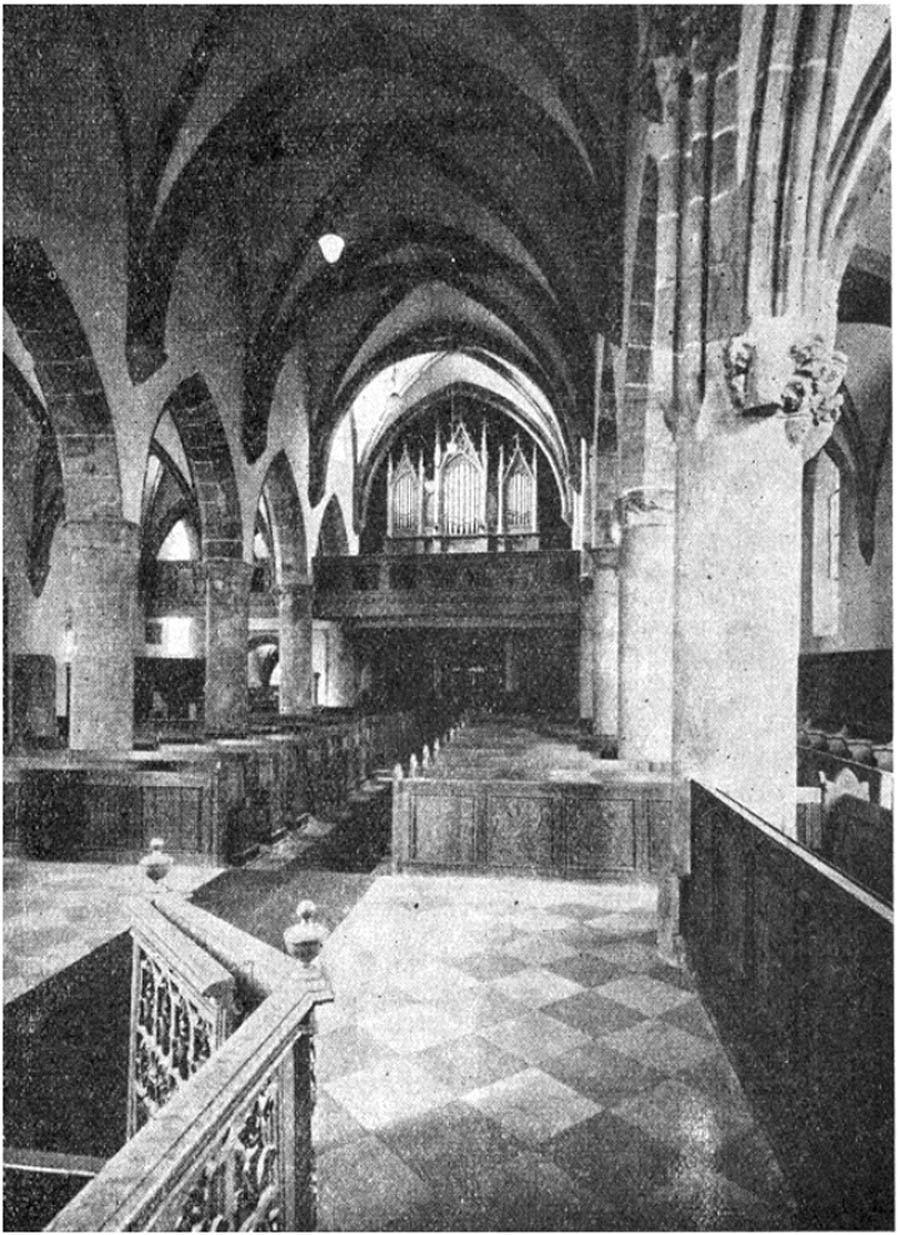The Schlosskirche at Dürkheim
continued...

The Leiningen Chapel in the Schlosskirche at Dürkheim
In the late 1970s, it was discovered that the ancient church was again in the state of collapse, due to the deteriorated condition of the foundation walls that supported the great weight of the neo-Gothic tower. It was further discovered that the pillars, that had suffered so much from the great fire of 1689, were bearing only half their load-bearing capacity. Restoration began in 1978, which included reinforcement of the tower’s foundation, wall work, and the foundations of the pillars. The floor of the church was taken down 60 centimeters (about two feet) to the original level, and new pillars with Romanesque capitals were installed.
With the strengthening of the church’s infrastructure came the recreation of the church’s interior, as it appeared prior to the 18th century. The chancel altar from the days of Friedrich Carl and Anna Catharina was removed and placed in the Pfalz Museum at Speyer. The organ loft at the rear of the church was taken out.

The interior of the Scholsskirche appearing very much as it did when Friedrich Carl Christlieb and his family worshipped there, prior to their departure for America in 1765. The church retained this appearance until 1978.
The 1537 baptismal font [Taufstein] that had been removed in 1706 and placed in a museum (because a Jew had once been baptized in it) was returned. An ancient stone carving of the Last Judgment, which was once was a part of the old church’s décor, was released from a museum and reinstalled as a piece of wall art. With the help of the West German government, the restoration was completed in 1981. The undertaking was crowned with a new pipe organ by the renowned German builder, Martin Ott.

An interior view of the Scholsskirche showing the Baroque chancel altar that was completed 13 years before Friedrich Carl and Anna Cahtarina were married before it on July 22, 1742. The Leiningen Chapel is seen on the right.
The ancient church narrowly escaped destruction during World War II. On March 18, 1945, after bombing important targets in Germany, American planes emptied surplus bombs over Dürkheim, on their return to home base. A third of the city was destroyed, along with 285 men, women, and children. One of the bombs crashed through the roof-ridge into the interior of the church, but it did not explode. Some days later, Helmut Kraub, a courageous 16-year-old boy, disarmed the bomb, carried it out of the church, and threw it into a nearby brook. Thus the site of the origin of the American Christlieb-Chrislip-Crislip family escaped total destruction.

A modern view of the Schlosskirche with the Gothic tower that was added in the 19th century. The additional weight of the tower created stresses that, in time, led to the need for its foundation to be strengthened. In the process of stripping away constructions of the past, a huge Romanesque arch was uncovered that had been forgotten for hundreds of years. The arch was strengthened to support the tower. Once refurbished, the arch became the inspiration for the church to be restored, as much as possible, to its original Romanesque appearance.




